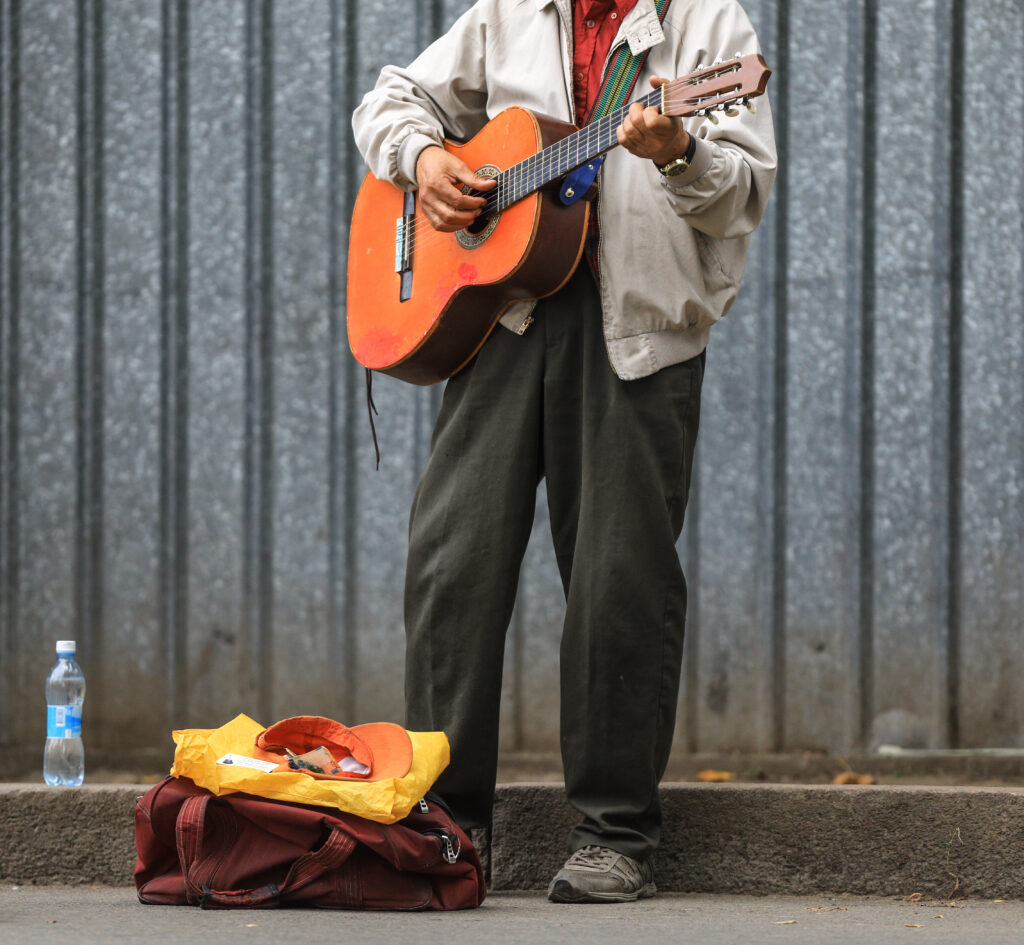What does it mean to be “Disenfranchised”?Why is developing art in these communities important?
It is an unfortunate reality that many artists do not make much money. In fact, art alone rarely generates enough income to lift an artist out of poverty. One of the main reasons for the disparity between ultra-expensive works of art, such as Banksy’s work, and the majority of art is that wealth in art purchasing is skewed toward the upper classes and access is predetermined.1

In short, most artists cannot make enough money to live off their art. This means that those who must spend their time providing food and money for their families and communities cannot also pursue their art, even if they love it or are good at it. It is often the people in poor communities without support systems who need to spend their time putting money first. In other words, there is an entire segment of the population that cannot participate in a fulfilling activity like art. If they cannot succeed in art, or if they cannot afford the time and supplies, they will not be able to create art with a happy heart. The following startups seek to help in these areas.
Music and Dance Education: BEAT Global
Issue Being Addressed
For many artists, hip-hop is built on the values of peace, respect, and self-worth. However, expressing these feelings face multiple barriers, including judgement from other cultural groups, an “entry cost” of instruments or performance fees, or a lack of free time to attend events or gatherings. These problems are especially bad in low-income communities or for those dealing with physical or mental disabilities.2
Business model
BEAT provides arts education programs rooted in hip-hop culture for youth and people with disabilities in disadvantaged communities, and for over a decade has offered programs in schools, community centers, New York City public libraries, and service agencies for people with disabilities. The idea is to provide accessible, socially responsive, culturally relevant, and inclusive workshops that can be delivered simply and for cheap, and the goal is to create workshops that serve as a platform for artistic dialogue and a safe space for youth to express their unique voices without judgment or fear.3
Reason for inclusion
This startup supports the most underserved areas of the world (areas that need help and want to pursue creative projects, but where there are direct and physical barriers for artists) and has proven their efficacy over the last 10 years. They have also begun partnering with public New York Schools, so they are likely to expand their efforts in the future.
Facilitating Connections: Culture Push
Issue being addressed
It is very difficult for poorer artists and those creating works of art to know the right people or the right places “to get their art out there,” which drastically limits their ability to succeed financially and in popularity. The core issue lies in the lack of ability to create a network or create environments where like-minded people will actually see each artist’s art. This can be limited by age, language, culture, or even the cost to enter things like art museums or art festivals.4
Business model
Their main objective is to create programs that match people from different backgrounds with different goals through art and artistic experiences. Programs focus on collaboration and group learning through active and participatory experiences. Programs are offered in a variety of locations, in a variety of formats, and public presentations are low-cost or free of charge to ensure access to a large audience. They also use their fundraising efforts to supply scholarships to young adults seek an art education.5
Reason for inclusion
One of the biggest barriers to success in poor communities is the lack of connections with people who are already successful and professionals who can relate to their experiences. This startup is making a major effort to rectify this problem. Although they are only stationed in one city, their efforts have spread across the entire country.
All URLs were viewed on 9-16-2022.
1 Why Are So Many Artists Poor? (Explained) – Artistry Found https://artistryfound.com/why-are-artists-poor/
2 Hip Hop and Disability: An Interview with Leroy Moore Jr. | AAIHS https://www.aaihs.org/hip-hop-and-disability-an-interview-with-leroy-moore-jr/
3 home – BEAT GLOBAL https://beatglobal.org/home/
4 How Hard Is It to Make It as an Artist? A New Study Shows There Are Many Paths to Success—and Failure | Artnet News https://news.artnet.com/art-world/artist-financial-stability-survey-1300895
5 Culture Push https://www.culturepush.org/





